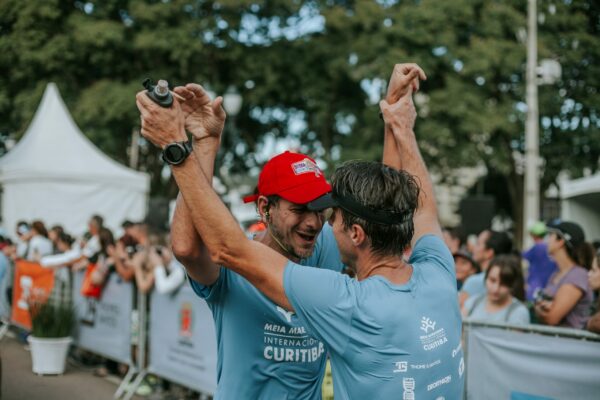I think recovery is particularly important for beginners to be aware of. We don’t know our body’s physiological mechanisms yet and we are very motivated at the beginning of our running career. Most of us have many and fast ambitions to get progress in our efforts with running. How to focus on recovery after running – important growth is particularly necessary as a newbie to get progress, because your body needs slow improvements/growth during the runs and the new loads.
Beginner Ambitions

In the beginning, we’ll show ourselves that we make progress and perform visible results in either weight loss or time improvements and after a couple of months we want to run fast and for a long time in our training sessions. But many of us stop the run after these months because we don’t experience the expected results, we have to ourselves.
Start Running on Your Terms
When you start up a marathon training project, I’ll highly recommend that you do it on your terms and preconditions. You don’t want to compare yourself with others in this phase, because we all have different preconditions in the starting point, and running is about learning to know yourself and your body and not others personal preconditions and goals.
A couple of weeks aren’t enough unless you have experience with other sports. Your starting and preparation phase should be at least 2 – 3 months. You can also start with a goal setting worksheet to prepare yourself in advance and your goal doesn’t necessarily have to be a marathon. Choose one that fits your level It’s just a suggestion.
In that period habituation will be your friend, as you start seeing yourself as a runner and your shape improves a lot just like your physiology in general, which means that you are on track with your running progress. The best to do in this phase is to run often and run slowly.
In that way, you run with a surplus for most of the time. If you never have been physically active before, you will probably also meet Psychic adversity since your transition/new habits have consequences for your system.
Running – Patience and Practice
You have to acknowledge that running is not always easy you need patience and practice. Rest and recovery are crucial for your shape progress, so sit down on the sofa sometimes and enjoy an afternoon with a good movie knowing that you have started a project that you decided to do.
If you don’t rest, you risk that the shape going the opposite way and small injuries start to show up. As beginner, it would be a good idea with support from friends or family or others on the same running level as yourself like running buddies. Maybe others who want to run the same race in the future as you, it will also be fun after the Race.

Recovery After Run
The precondition to get in shape by running, so the body’s tissues become stronger, is to give the body the necessary time to build itself stronger. It means that after training, the body must have time and opportunity to rebuild the loaded structures and depots again as illustrated in a Supercompensation Diagram.
Theoretically, you become weaker and get a poorer performance by training. Training loads the body’s tissue that actually decomposes a little. Fortunately, the body reacts to this decomposition by rebuilding itself. This rebuilding phase is called recovery.
There are no rebuilding processes without training stimuli. Therefore, it is not “dangerous” when the body tissues are loaded, as long as you give the rebuilding processes time and opportunity to ‘do their job’. The precondition for the body to rebuild itself is enough rest.
In this way, the rebuilding processes have time to enhance the body’s tissues and performance, as a minimum back to the starting point from before the training. The body’s task here is to restore the functions in cells, remove decomposing substances, rebuild cellular components and restore the function in organ systems.
Recovery process
The necessary recovery is individually determined. recovery time will mostly depend on the intensity and duration of the previous training and the training level. A well-developed aerobic endurance creates good preconditions for a fast and efficient recovery.
If we expose two people with different training level for the same percentage of load concerning their maximum capability, the recovery need will be much higher for the untrained person than for the well – trained.
This is why elite runners can train up to several times a day, while beginners need a few days to rest between the training days. Therefore, it is also important that the training spreads evenly over the week and that you give the rebuilding processes time to work.
The more years you have trained, the more you can tolerate and the less recovery is necessary. The best way to learn your own recovery times is by experience, the experiences you do yourself. For less experienced runners, it is generally better to keep a long rest than a short rest.
Recovery & Rest

Recovery is often defined as returning to a better state, while Rest is defined as inactivity. In other words, having a rest day would mean that you are inactive and don’t do much physical activity. Taking a recovery day means that you are consciously opting to do something that helps your body recover.
Top-trained runners can very likely recover about half of the time as poorly trained runners need. Good restitution habits after training or competition (fluid, nutrition, replacement of essential nutrients, dry clothing, jogging, or similar) will shorten the recovery time, depending on the initiative used and when they are used.
if you are an experienced marathon runner, you can run “recovery runs” which is the lowest pace at the shortest distance at all.
The main rule here is that some activity in the recovery is active recovery the day after a long training session aiming to recover better. Because a certain activity here provides better recovery than total rest.
This is because a larger blood flow provides both more oxygen and more nutrients and more efficiently transports degradation products away, than when the blood flow is small with no activity at all.
But as a beginner following a training program, you also recover the day after even if you are inactive and just rest, because you are not capable yet to do these “recovery runs” as active recovery the day after a demanding training session.
Recovery Needs
During recovery, the following occurs:
- Degraded muscle fibers rebuild
- Reconstruction of cellular constituents
- Accumulated lactate in muscles and blood removes
- Depleted energy depots in cells builds-up
- Glycogen depots in muscles re-fills
- The fluid balance redresses
- The blood sugar level redresses
As you can imagine, if you do not respect the rebuilding processes, there will be no progress and your risk for injuries increases. Another suggestion for you is to read about success stories about running on the internet or Facebook.
If you are thinking about recovery after a run like myself, I hope you like this page and if you have any questions about the topic or want to leave your own Personal review, please leave a comment below.





